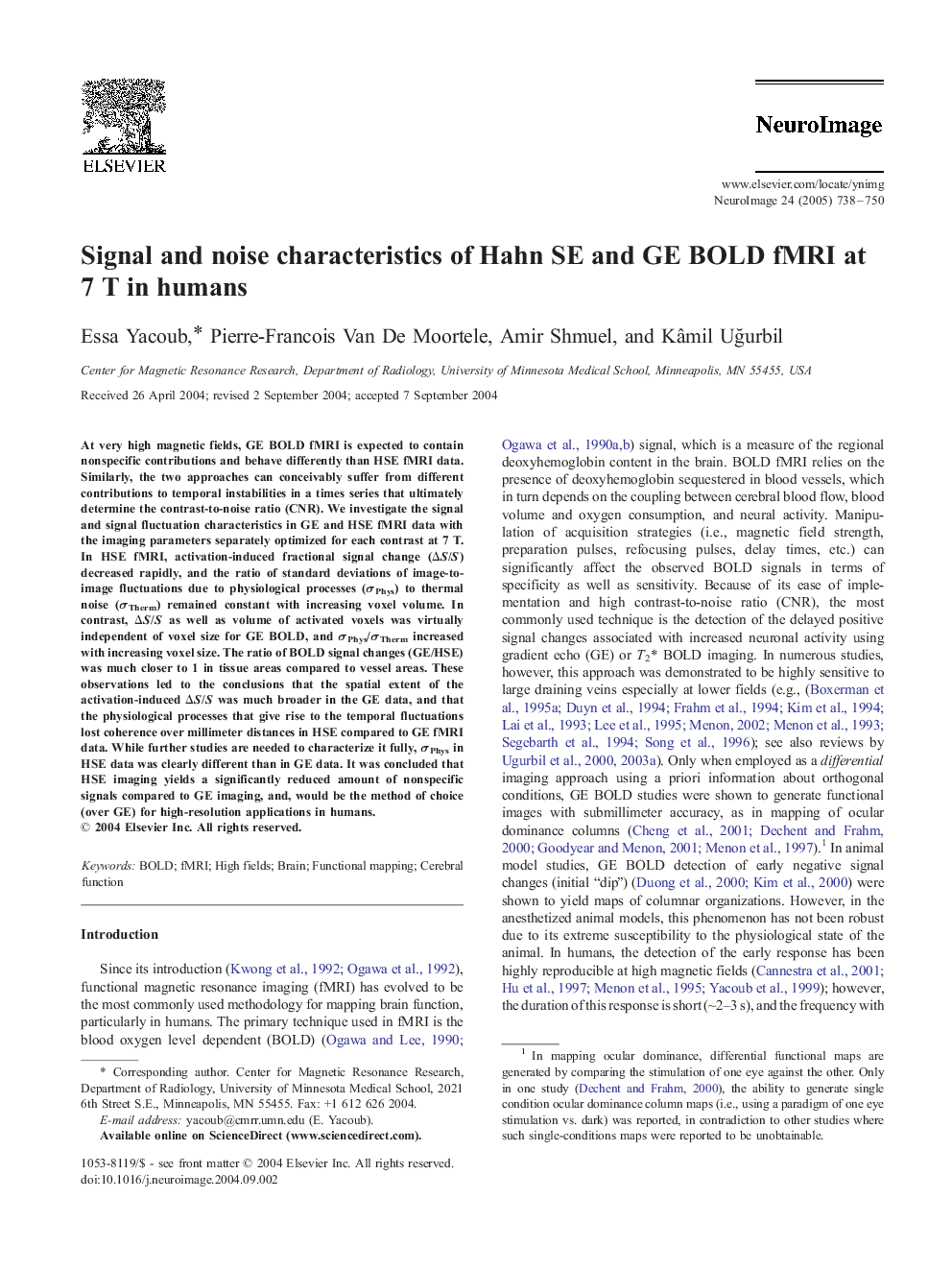| Article ID | Journal | Published Year | Pages | File Type |
|---|---|---|---|---|
| 9198013 | NeuroImage | 2005 | 13 Pages |
Abstract
At very high magnetic fields, GE BOLD fMRI is expected to contain nonspecific contributions and behave differently than HSE fMRI data. Similarly, the two approaches can conceivably suffer from different contributions to temporal instabilities in a times series that ultimately determine the contrast-to-noise ratio (CNR). We investigate the signal and signal fluctuation characteristics in GE and HSE fMRI data with the imaging parameters separately optimized for each contrast at 7 T. In HSE fMRI, activation-induced fractional signal change (ÎS/S) decreased rapidly, and the ratio of standard deviations of image-to-image fluctuations due to physiological processes (ÏPhys) to thermal noise (ÏTherm) remained constant with increasing voxel volume. In contrast, ÎS/S as well as volume of activated voxels was virtually independent of voxel size for GE BOLD, and ÏPhys/ÏTherm increased with increasing voxel size. The ratio of BOLD signal changes (GE/HSE) was much closer to 1 in tissue areas compared to vessel areas. These observations led to the conclusions that the spatial extent of the activation-induced ÎS/S was much broader in the GE data, and that the physiological processes that give rise to the temporal fluctuations lost coherence over millimeter distances in HSE compared to GE fMRI data. While further studies are needed to characterize it fully, ÏPhys in HSE data was clearly different than in GE data. It was concluded that HSE imaging yields a significantly reduced amount of nonspecific signals compared to GE imaging, and, would be the method of choice (over GE) for high-resolution applications in humans.
Related Topics
Life Sciences
Neuroscience
Cognitive Neuroscience
Authors
Essa Yacoub, Pierre-Francois Van De Moortele, Amir Shmuel, Kâmil UÄurbil,
